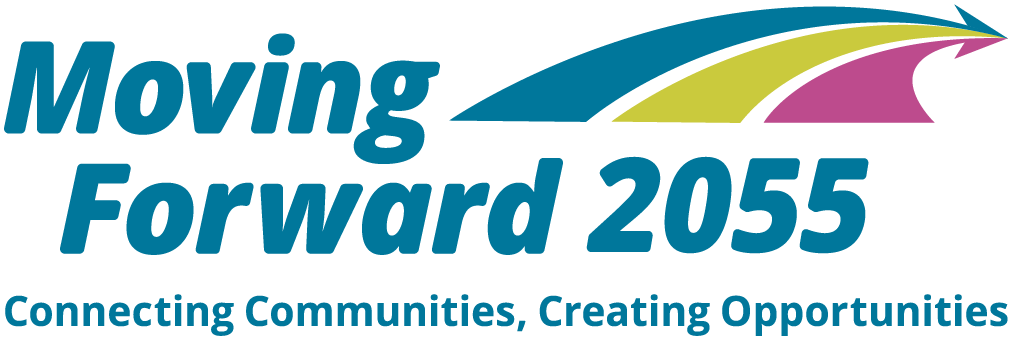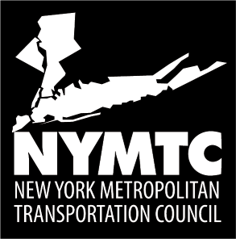The Complete Plan
Moving Forward 2055 is organized into chapters and appendices that convey the results of discussions and analyses during the Plan’s development.
View the comments on the Plan and NYMTC's responses to these comments.
View the change log which notes changes made to the Plan and accompanying appendices since it was released for public review.
Executive Summaries
English | Spanish | Russian | Simplified Chinese | Traditional Chinese
Chapters
-
The Vision and Goals, Guiding Principles, and Objectives described in this chapter were employed throughout the Moving Forward 2055 planning process.
-
Federal legislation and related planning regulations require MPOs to produce a long‐range regional transportation plan, a five‐year transportation improvement program, and an annual unified planning work program. This chapter describes those requirements and the regional planning process, partners, and context within which planning occurs.
-
This chapter evaluates the condition and performance of the transportation system, sets performance targets, and reports on current progress in meeting the targets. This chapter also includes forecasts of future conditions, needs and potential transportation improvements, as well as an exploration of transformative changes that may impact the future of transportation, and, therefore, our approach to the strategic framework used to build Moving Forward 2055.
-
This chapter describes the seven Vision Goals and their objectives in detail. Relevant trends and conditions are analyzed for each goal, and related existing programmatic initiatives are described. Additionally, short‐ and medium‐term strategies and actions for each goal and its objectives are recommended.
-
Moving Forward 2055 encompasses activities related to the federally supported transportation system, including operations and maintenance of the system; the life‐cycle replacement, refurbishment, rehabilitation, reconditioning, or reconstruction of components of the system; and extensions or improvements to the existing transportation system or new segments or services added to the transportation system to improve capacity and throughput. Moving Forward 2055’s financial chapter describes the estimated costs for these activities and anticipated sources of revenues to cover the costs.
Appendices
-
Moving Forward 2055 recommends numerous projects, programs, and studies for the NYMTC planning area during the 2026–2055 planning period. All projects and studies are listed in this appendix, including maps of the projects and the region’s identified CDEAs and HGAs, in addition to project profiles for Major Metropolitan Transportation Investments (MMTI).
-
This appendix presents data and information on a wide range of recent socioeconomic and demographic trends and forecasts over the course of the Plan. SED forecasts have been developed for a 31‐county “forecast region” in the multi‐state metropolitan region. Forecasts are provided for the following categories: employment, population, labor force, households, and household size. The forecasts, which are disaggregated geographically into discrete traffic analysis zones, are fundamental inputs to forecasting travel demand within the transportation system, including the future assumptions for the movement of people and goods outlined in Chapter 3.
-
The Active Transportation element expands on previous iterations of the RTP’s Pedestrian-Bicycle Element to establish a comprehensive Active Transportation Plan. This plan outlines a new framework for supporting active transportation – including bicycling, walking, and micromobility – across the NYMTC planning area in accordance with the Moving Forward 2055 Shared Vision goals to address specific opportunities and emerging safety concerns. A comprehensive active transportation network includes safe and connected infrastructure, education and encouragement, micromobility, and a prioritized legal framework.
-
Commodity flows, which are the movement of all types of goods, shapes the need for and utilization of transportation assets and infrastructure. Commodity flow expectations provide an important framework for the planning of physical, operational, or regulatory improvements. This appendix provides background information on the volume and value, and trends, of commodity flows within, to, and from the NYMTC planning area and the larger area. The area is comprised of 10 regional planning agencies, including NYMTC, in New York, Connecticut, New Jersey, and Pennsylvania. The analysis of commodity flows, in turn, permits evaluations of performance and needs related to multimodal freight networks, facilities, and logistics. The Freight Element presented in this appendix draws from the analysis and evaluations.
-
The NYMTC planning area features a large, diverse, multimodal transportation landscape that includes several levels of public transit, paratransit, and human service transportation options. The region’s geographic and demographic diversity, along with its many transportation services and providers, makes it challenging to coordinate services. The Coordinated Plan reflects changes in the federal funding program and identifies opportunities for coordination and investment in specialized transportation services throughout the NYMTC planning area. Opportunities focus on the needs of the two target populations: older adults (age 65 and older) and people with disabilities.
-
NYMTC is committed to protecting and enhancing the region’s natural resources, promoting energy conservation, improving the quality of life, and promoting consistency between transportation improvements and state and local planned growth. Specific to the development of Moving Forward 2055, environmental stewardship and mitigation support the Plan’s Shared Vision and Goals, particularly the Plan’s goal of reducing environmental impacts. NYMTC continued the consultation process established in Moving Forward through researching environmental initiatives in the NYMTC region and partner participation in the various public outreach activities. This outreach identified resource and conservation concerns that informed the development of the Plan.
-
One of NYMTC’s guiding principles is to consider the needs of all users in the planning process. Federal mandates emphasize the importance of addressing the disproportionately high and adverse human health or environmental effects on minority and low‐income populations through the transportation planning process and require that recipients of federal aid comply with the policies set forth in Title VI of the Civil Rights Act. The Title VI Assessment ensures compliance with the requirements regarding non‐discrimination within the transportation planning and programming process for Moving Forward 2055.
-
NYMTC developed Moving Forward 2055 in part through a public involvement effort that engaged various constituencies and key audiences. It gathered input from the public, community‐based advocacy groups, Communities of Concern, and other stakeholders, including a Regional Transportation Plan Subcommittee composed of NYMTC planning area agency members. Engagement of communities traditionally underserved was emphasized broadly for outreach efforts. Moving Forward 2055’s engagement program included a mix of in-person and virtual events spanning New York City, Long Island, and the Lower Hudson Valley, where virtual forms of outreach were undertaken with great care to ensure that diverse and representative input could be obtained. The Public Involvement Report summarizes Moving Forward 2055’s engagement program efforts and includes a high-level summary of key findings.


